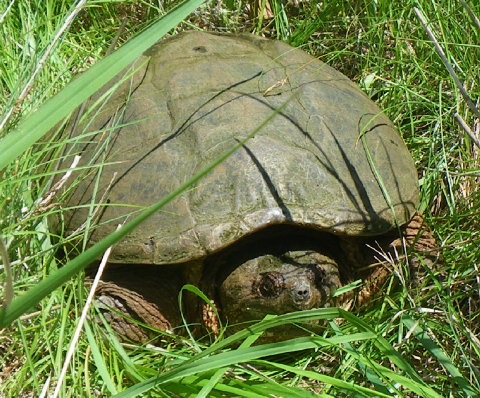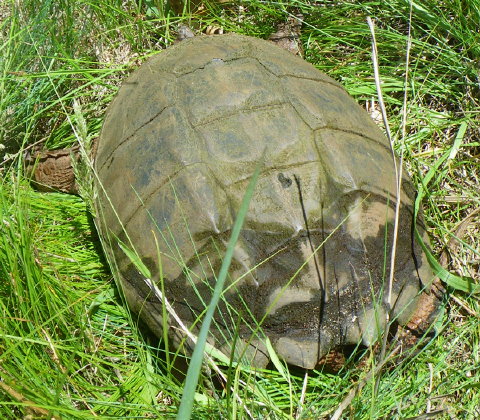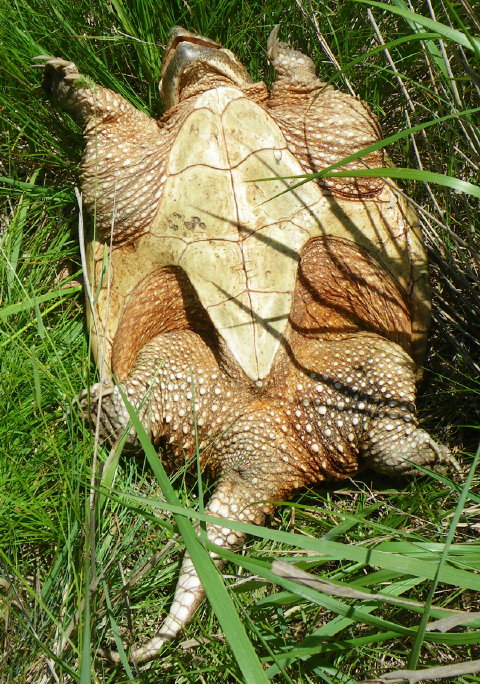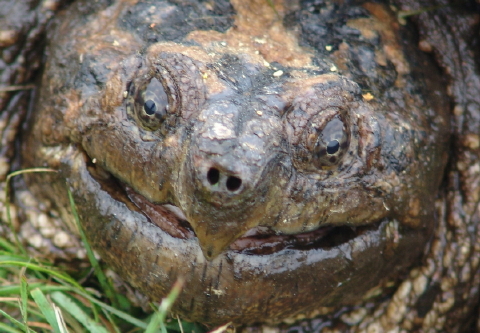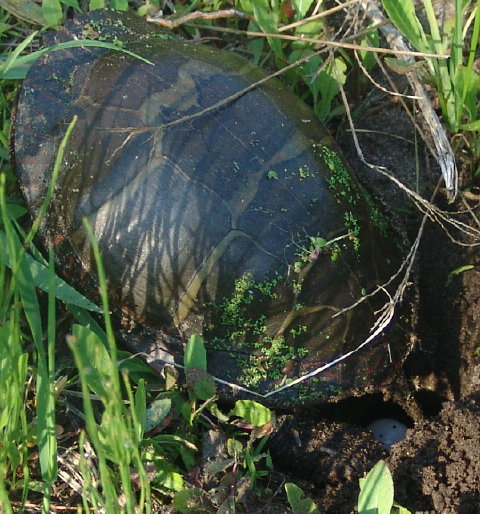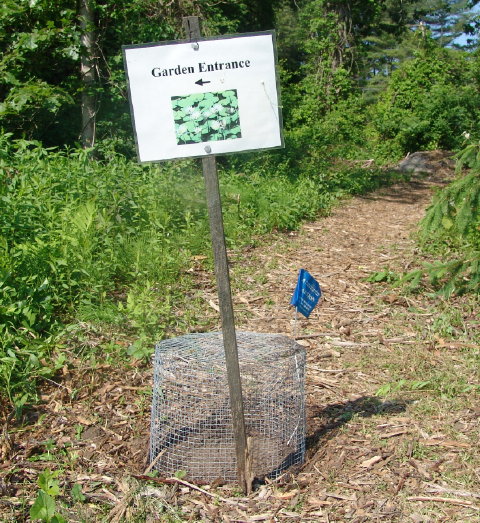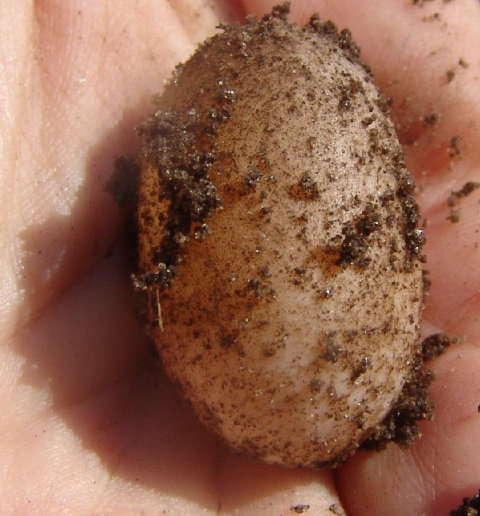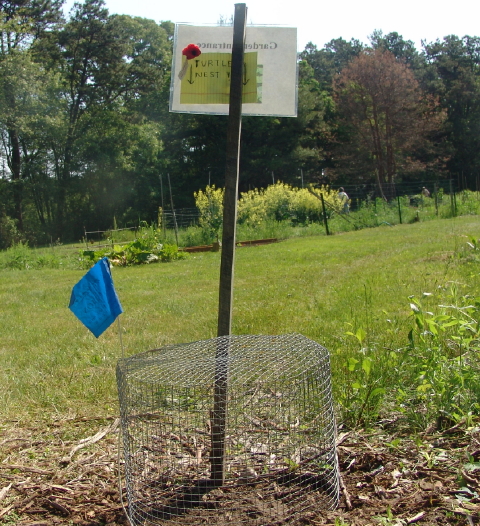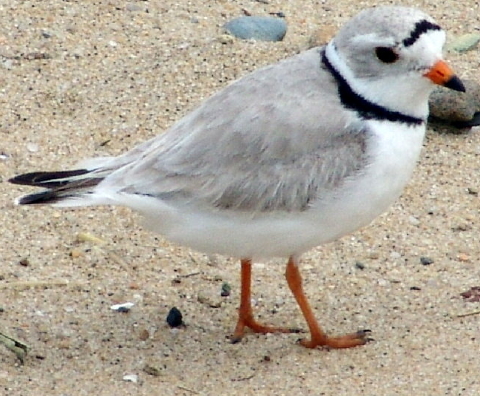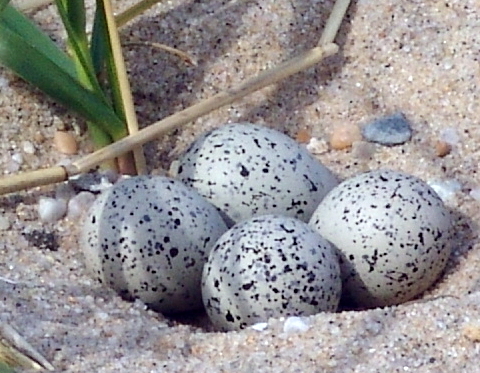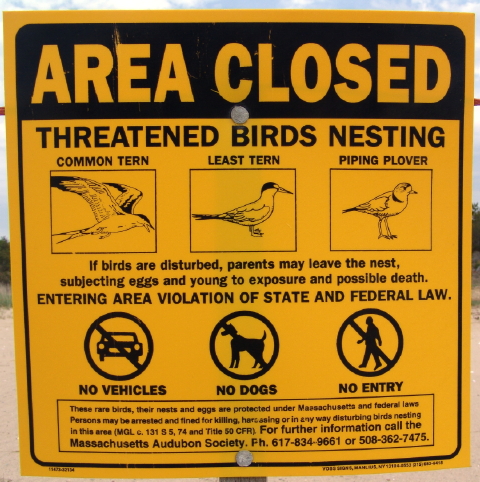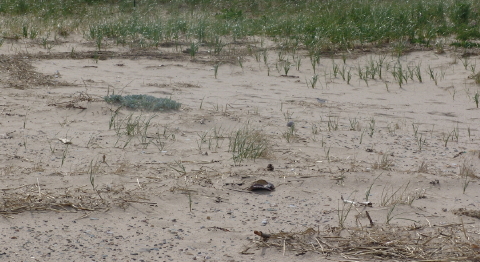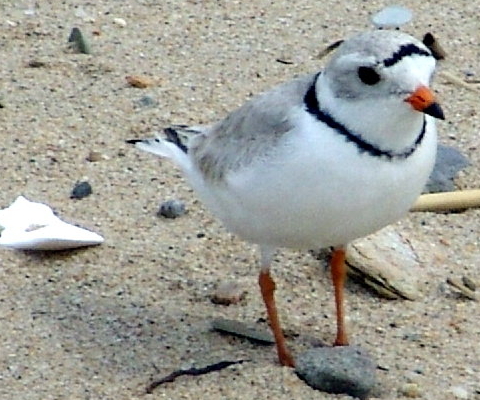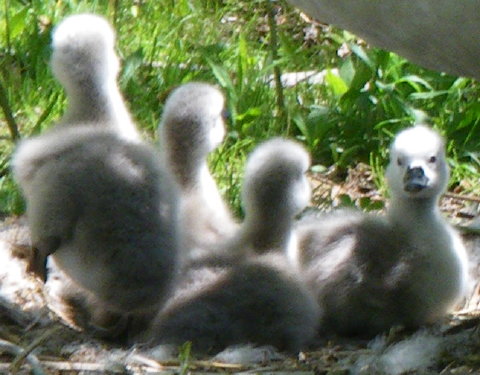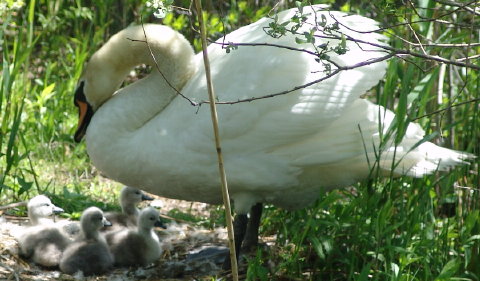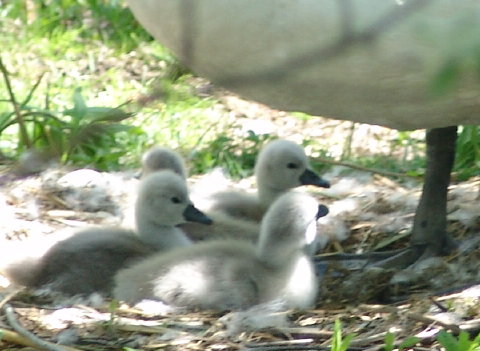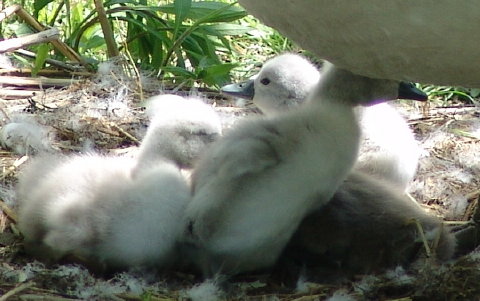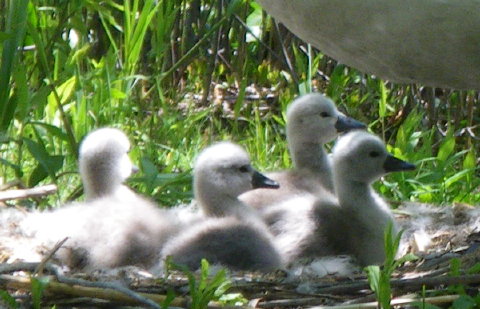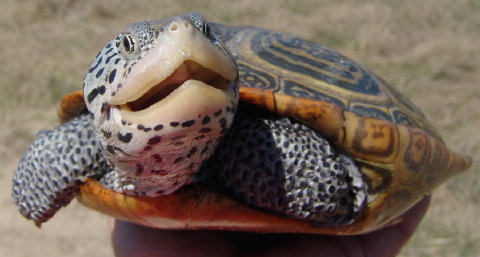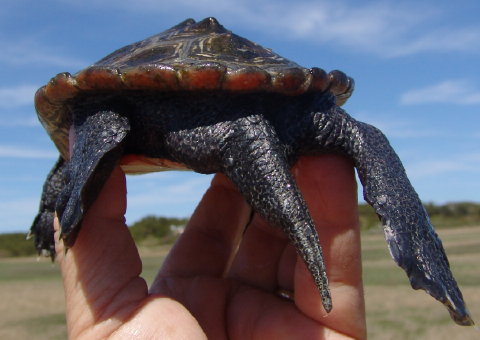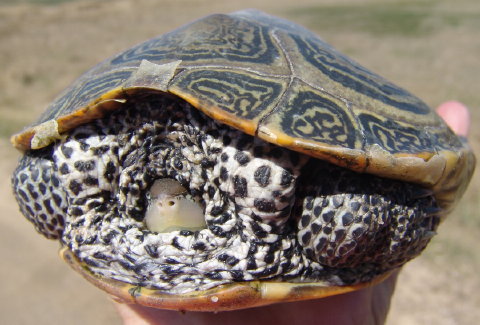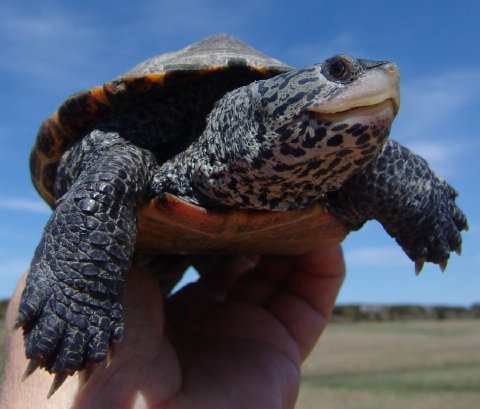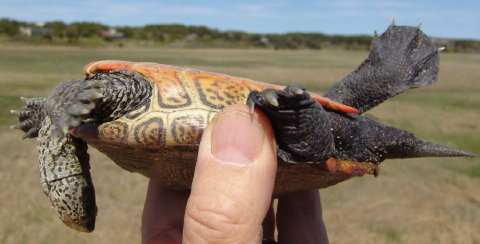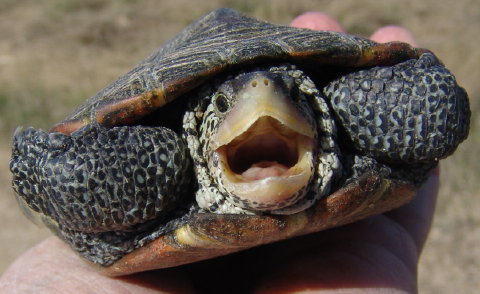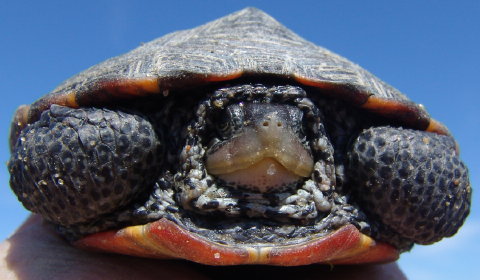Why Did This Snapper Cross the Road?
Returning to Turtle Journal headquarters from a nesting terrapin call in the Narrows of Wareham, Sue Wieber Nourse encountered a tragedy in the making on busy Route 6 that serves as a tourist gateway to Cape Cod as we approach the beginning of Memorial Day Weekend. A medium sized female snapping turtle decided that it was time to make her annual pilgrimage from her wetlands home on the north side of Route 6 to her nesting site on the south side of the highway. The only obstacle that lay between her and her goal was a four lane highway with cars and trucks whizzing by in both directions.Â
To Get to the Other Side, of Course
Wieber Nourse spotted the snapper edging across the highway as high speed traffic dodged and swerved around her. The chances of this snapping turtle making it “to the other side” were quite similar to a snowball’s chance of surviving a trip into the raging pit of an erupting volcano. She stopped her car and waded into the traffic to save the snapper.
Humans Rescue Snapping Turtle from Humans
Out of nowhere a couple of everyday heroes arose to assist Wieber Nourse in the quest. One of these young gentlemen gingerly lifted the snapper and carefully maneuvered her back to the side of the highway. Unfortunately, the wrong side of the highway. Since the snapper had already endured more than enough human “assistance,” it was going to be a challenge, indeed, to lift and carry her back across four lanes of pre-holiday traffic to reach her nesting site on the other side. Yet, if Wieber Nourse and her helpers didn’t get her across the highway safely, then the snapper would just wait a few minutes and begin to weave and zigzag her way through the traffic once more … with a totally predictable outcome.
Snapper’s Trip Was NOT Uneventful
So, they employed the Lewis Maneuver by nudging the snapping turtle head-first into a bucket, large enough for her to fit comfortably, but NOT large enough for her to turn around. Once securely in the bucket with head down and prehistoric tail snapping back and forth, the snapper was quickly raced across the highway while helpers frantically waved down the traffic. When the snapper emerged from the bucket on the steep slippery slope on the other side of Route 6, she tumbled and rolled, briefly exposing her plastron before quickly recovering and continuing her trek to her nesting site.
“Let Me Shake Your Hand … Off”
You may not be able to predict the stock market or the outcome of March Madness, but you can easily predict the attitude of a snapping turtle whom you have just rescued from sure death. They smile whimsically in your direction and imply, “Thank you for that special moment. Let me shake your hand … off.”
